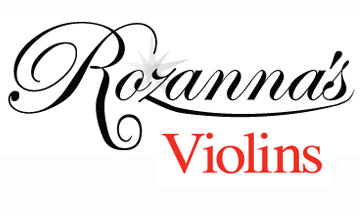by Rozanna Weinberger

Presented at the Educators Sessions, NAMM 2018
Anaheim, California
Good afternoon! I want to thank the NAMM organization for this opportunity to share with you a bit about my company, its inspiration, and why we’ve gained momentum in the industry.
For most of my life, I have worked on the performance side of the music business. This enabled me to experience, first hand, the changing climate for classically trained musicians, where opportunities for these musicians have diminished over time, in part as a result of changing societal trends. This issue was underscored in an article seen in the NY Times awhile back, citing the large nos. of Juilliard grads unable to make careers in music after graduating.
This suggested to me that on a certain level, students were not being prepared to effectively navigate the changing terrain of the music world. These realizations led to the nucleus of my own pedagogical beliefs and the formation of my company, Rozanna’s Violins, which produces violins with cool looking designs on them. Our aim has been to resonate with a child’s innate creative and playful impulses.
As a pedagogue, I also sensed our instruments could begin to fill a gap in a child’s education by helping them to form a connection to music on multiple sensory levels. Our aim has been to make this connection from the very start of a child’s experience with violin playing.
While it is generally considered a forgone conclusion that being creative is a natural bi product of music education, in fact creativity and playful learning are not necessarily a part of a students curriculum.
Knowing how to teach and engender a creative life is a science in itself. Companies such as 3M, Pixar and Apple among others, who’s bottom line is based on coming up with great ideas for their survival, have long recognized the science of creativity – to the extent that fostering a creative work environment is a key part of their corporate culture. And while its seems obvious that creativity is an essential part of music making, it can also be a tool for survival, when navigating unexpected changes on ones career path.
In a recent Forbes Magazine article, entitled ‘Why Playful Learning Is The Key To Prosperity’, author John Converse Townsend asks:
So, where did play go?

Children at play!
Over the last three decades, while schoolchildren K-12 have become better test-takers, they’ve also become less imaginative, according to experts like, Kyung Hee Kim, professor of education at the College of William and Mary.
Kim analyzed scores from the Torrance Tests of Creative Thinking and found “children have become less emotionally expressive, less energetic, less talkative and verbally expressive, less humorous, less imaginative, less unconventional, less lively and passionate, less perceptive, less apt to connect seemingly irrelevant things, less synthesizing, and less likely to see things from a different angle.”
For most of us it seems to make sense that music education would help solve these gaps in development. And yet, too often, students are given a musical program so carefully orchestrated, if gives the student little opportunity to exert their free will and creative inclinations.
While I don’t presume that creating violins with cool designs on them will automatically solve all of these issues, stimulating a child’s connection to music on multiple levels, made sense as a starting point for a creative and playful musical life.
With playfulness at the heart of a child’s experience, they can more actively engage in music making, on an instrument that resonates with their unique personalities. In short, we believe children are better able to learn music, grounded in a more immersive creative experience.
It seems our violins are gaining traction because they are, in some way, filling a void, which is the basis of any trend. Regarding the nature of trends, Music Trades, Editor, Brian Majeski commented as follows in publication of Music Trades:
“When we talk about “shifting product trends,” we’re actually describing what happens when consumers independently decide to do things a little differently. A few thousand, or perhaps millions, of potential buyers casually opt to postpone a purchase or buy something else, and all of a sudden, there is a new “trend” that forces businesses to restructure, revamp a product line, or face possible extinction.”
The bottom line is that our violins are resonating with something that consumers need – but perhaps more importantly, it is being led by the consumer, and following a current that is shaping a new world of possibilities for the modern string player. In the 7 short years of our existence, we have achieved industry firsts, which include designing a violin for the music to FROZEN and this year, a violin for the music to STAR WARS. I believe these achievements were possible because we are doing something of value that resonates with the world at large. With creativity as the basis for modern music education, we are confident students will be better equiped to survive and thrive in this world.

